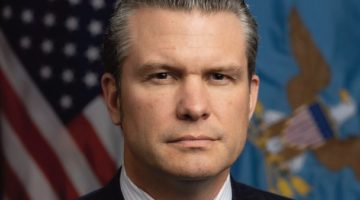Associated Press Writer
TOLEDO, Ohio — As a child, Wanda Butts learned to stay away from the water. Her father had witnessed a drowning when he was young and passed down a fear of swimming.
Like many blacks, she didn’t learn to swim and she instilled those same anxieties in her son, never taking him to the pool or enrolling him in lessons.
So when 16-year-old Josh drowned in a lake four years ago, she blamed herself. Months later, her grief turned to action and she decided to start a program that gives low-cost swim lessons to children, most of whom are black and from the inner city.
“I just want to save another parent from beating themselves up like I’ll do the rest of my life,” she said. “I was grieving. I was sad but I wanted to do something.”
In three years, 800 kids have signed up for lessons. And summers usually have a waiting list of a dozen families.
What Butts is doing is breaking a generational cycle of blacks who don’t know how to swim, one child at a time. But the challenge is daunting.
Seven out of 10 black children have little or no swimming ability, according to a study released last spring by USA Swimming, the sport’s governing body. By comparison, six of 10 Hispanic children and four in 10 white children couldn’t swim, the same report said.
Other studies have found that blacks are much more likely to drown than whites, especially children from low-income homes, according to several studies.
The drowning of six black teens in a Louisiana river nearly four weeks ago is a reminder for Butts of why she has dedicated herself to teaching kids to swim. Neither the teens who drowned nor their relatives who watched helplessly from shore could swim.
“It reminds me of losing my son,” said Butts, 57. “It makes me want to fight that much harder.”
Josh Butts had a big smile and loved being with friends and playing sports – basketball, baseball, just about anything except swimming.
The 16-year-old was with friends at a small Michigan lake in August 2006 when he got on a raft and floated to a spot that was deeper than they knew. When he fell in, his friends were too far away to help.
His mother started the “Josh Project” with the help of USA Swimming and a local aquatics club. Nearly all the money comes from donations and goes toward keeping costs affordable.
Four half-hour lessons cost $10. Teens work as instructors, and the classes are small in size so the children get lots of individual attention.
“What she’s doing is such a blessing,” said Tiaunna Richardson, whose two eldest boys, ages 7 and 5, are learning to swim this summer. “One of one of my sons had a great fear of water. He’s now going underwater.”
When Kelli Williams enrolled her 10-year-old triplets in the program, sons Austin and Isaiah would barely move away from the wall or get their heads wet.
“They would be the ones in the group who would watch everyone else,” she said. “Now I can’t get them out of the water.”
Others have been inspired to follow the lead of the woman the children know as “Ms. Wanda.”
“I’m a mother, I’m a grandmother, I’m an African American. I know that story,” said Carolyn Lett, diversity coordinator at The Roeper School in Bloomfield Hills, Mich. “I don’t swim. My daughter doesn’t swim.”
She suggested that the school in suburban Detroit use its pool to offer swim lessons to low-income children.
The school began offering lessons this month and is raising money for scholarships. Her hope is to end “a tragic story that continues to repeat itself.”
The roots of why so many blacks don’t swim can be traced to racial inequalities and economics. For decades during the 20th century, many pools and beaches were segregated, and relatively few were built in black communities.
Even today, cities with shrinking budgets are limiting access by closing public pools.
Butts flew to New York in early August to film a promotional video for a program that teaches minorities to swim and eventually become lifeguards on Long Island.
“If she saves one child’s life, how do you put a price tag on that?” said Robert Nori, director of philanthropy for the American Red Cross in Nassau County.
Butts has one more thing she’d like to do – learn to swim.
The first time she got in, more than two years ago, it didn’t go so well.
Once in the pool, she couldn’t bring herself to let go of the wall and the horrible memories. She gave up after a few days.
She decided to give it another shot in April and has since crossed the pool using a kick board.
“It’s a great accomplishment for me,” she said. “The next step is to let go. Letting go and being able to float, that’s what I want to do.”











No Comment